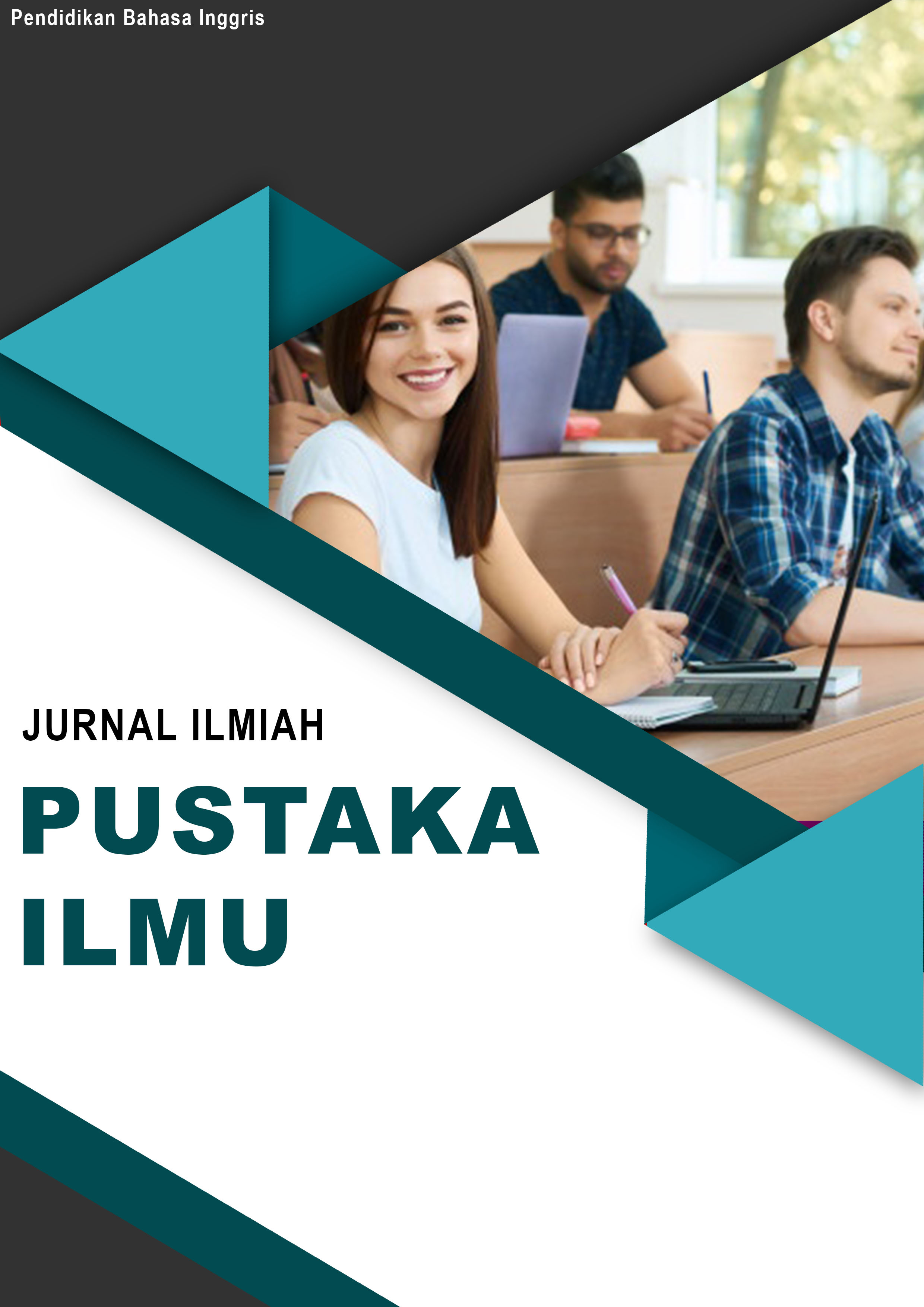EPHEBOPHILIAIN THE MAIN CHARACTER AS DESCRIBED IN LOLITA NOVEL BY NABOKOV
Kata Kunci:
Ephebophila, Main Character, Novel.Abstrak
Lolitais a novel written by Nabokov. The author exactly writes about a sexual disorder that has given the influence that is very bad to Humbert as the main character.In the analysis,sexual disorder is called ephebophila as the sexual orientation of the main character Humbert in the Nabokov’s Lolita.Humbert interests with dolorez because the finds. In doing the analysis the researcher applied psychological approach, supported by the theory of ephebophilia. Those are used by the researcher to do textual analysis. Besides, the researcher applied the data that were taken from the dialogues and narrations of Lolita novel as the object of this research. As it is the library research, the researcher involved the data needed from some books, journals, articles from the internet and news paper to provide the issue analyzed. Hence, in conducting this research, descriptive qualitative method was applied to elaborate the data concerning to the problem formulated. After applying those tehnique and analyzing data, then the researcher draws the conclusion. The analysis is concerning about ephebophilia as the result of the main character, where ephebohilia still has relations with the construction of ephebophilia who has experienced by the main character. The sexual fantasies are always experienced by the main character. The unconcious castration anxiety and sexual atraction which becomes a desire that must be done by the main character.
Referensi
Adelina, C., & Suprayogi, S. (2020). Contrastive Analysis of English and Indonesian Idioms of Human Body. Linguistics and Literature Journal, 1(1), 20–27.
Afrianto, A., & Ma’rifah, U. (2020). VARIOUS ENGLISH EQUIVALENTS OF INDONESIAN PREPOSITION’PADA’IN’LASKAR PELANGI’NOVEL TRANSLATION. LEKSEMA: Jurnal Bahasa Dan Sastra, 5(1), 49–63.
Al Falaq, J. S., & Puspita, D. (2021). CRITICAL DISCOURSE ANALYSIS: REVEALING MASCULINITY THROUGH L-MEN ADVERTISEMENT. Linguistics and Literature Journal, 2(1), 62–68.
Amelia, D., & Dintasi, F. D. (2019). Ephebophilia suffered by the main character. Teknosastik, 15(2), 81–86.
Chavez, M. (2000). Teacher and student gender and peer group gender composition in German foreign language classroom discourse: An exploratory study. Journal of Pragmatics, 32(7), 1019–1058.
Damayanti, M. E., & Listyani, L. (2020). AN ANALYSIS OF STUDENTS’SPEAKING ANXIETY IN ACADEMIC SPEAKING CLASS. ELTR Journal, 4(2), 152–170.
Evayani, W., & Rido, A. (2019). Representation of Social Actors in Sexual Violence Issue in The New York Times and The Jakarta Post Newspapers: A Critical Discourse Analysis. Teknosastik, 17(2), 43–55.
Febriantini, W. A., Fitriati, R., & Oktaviani, L. (2021). AN ANALYSIS OF VERBAL AND NON-VERBAL COMMUNICATION IN AUTISTIC CHILDREN. Journal of Research on Language Education, 2(1), 53–56.
Fitri, E., & Qodriani, L. U. (2016). A study on flouting maxims in Divergent novel. Teknosastik, 14(1), 32–40.
Kardiansyah, M Yuseano. (2017). Tubuh dan Relasi Gender: Wacana Pascakolonial Dalam Novel “The Scarlet Letter” Karya Nathaniel Hawthorne. Poetika: Jurnal Ilmu Sastra, 5(1), 58–67.
Kardiansyah, M Yuseano, & Salam, A. (2020). The Translator’s Strategy as a Cultural Mediator in Translating Indonesian Novel into English. 4th International Conference on Language, Literature, Culture, and Education (ICOLLITE 2020), 413–418.
Kardiansyah, Muhammad Yuseano, & Qodriani, L. U. (2018). ENGLISH EXTRACURRICULAR AND ITS ROLE TO IMPROVE STUDENTS’ENGLISH SPEAKING ABILITY. RETORIKA: Jurnal Ilmu Bahasa, 4(1), 60–69.
Kuswanto, H., Pratama, W. B. H., & Ahmad, I. S. (2020). Survey data on students’ online shopping behaviour: A focus on selected university students in Indonesia. Data in Brief, 29, 105073.
Kuswoyo, H. (2013). The Effectiveness of Song Technique in Teaching Paper Based TOEFL (PBT)’s Listening Comprehension Section. Advances in Language and Literary Studies, 4(2), 48–56.
Mahfud, I., & Gumantan, A. (2020). Survey Of Student Anxiety Levels During The Covid-19 Pandemic. Jp. Jok (Jurnal Pendidikan Jasmani, Olahraga Dan Kesehatan), 4(1), 86–97.
Mandasari, B. (2017). Role Playing Activity in English for Business Class for Non-English Study Program.
Mertania, Y., & Amelia, D. (2020). Black Skin White Mask: Hybrid Identity of the Main Character as Depicted in Tagore’s The Home and The World. Linguistics and Literature Journal, 1(1), 7–12.
Novita, D., & Husna, N. (2020). THE INFLUENCE FACTORS OF CONSUMER BEHAVIORAL INTENTION TOWARDS ONLINE FOOD DELIVERY SERVICES. TECHNOBIZ: International Journal of Business, 3(2), 40–42.
Novita, D., Husna, N., Azwari, A., Gunawan, A., Trianti, D., & Bella, C. (2020). Behavioral Intention Toward Online Food Delivery (OFD) Services (the study of consumer behavior during pandemic Covid-19). Jurnal Manajemen Dan Bisnis (Performa), 17(1), 52–59.
PUSPANINGRUM, A. S. (2012). THE DEVELOPMENT OF QUICK TYPING TOOLS BASED OPEN SOURCE.
Puspita, D. (2019). Error analysis on learners’ interlanguage and intralanguage: a case study of two adolescent students. Teknosastik, 17(2), 12–18.
Puspita, D., & Pranoto, B. E. (2021). The attitude of Japanese newspapers in narrating disaster events: Appraisal in critical discourse study. Studies in English Language and Education, 8(2), 796–817.
Pustika, R. (n.d.). ARISING BILINGUAL CHILDREN BY PROMOTING SECOND LANGUAGE AWARENESS.
Saifuddin Dahlan, F. H. (2013). THE INFLUENCES OF PERSONALITY AND COGNITIVE PERCEPTION TOWARDS THE STUDENTS’INTENTION TO USE DATABASE SOFTWARE AT THE COMPUTERIZED ACCOUNTING VOCATIONAL COLLEGES IN LAMPUNG PROVINCE. Universitas Lampung.
Saputra, V. H., Pasha, D., & Afriska, Y. (2020). Design of English Learning Application for Children Early Childhood. Proceeding International Conference on Science and Engineering, 3, 661–665.
SARI, F. M. (2013). IMPROVING STUDENTS’LISTENING ABILITY THROUGH DICTATION TECHNIQUE AT THE FIRST YEAR STUDENTS OF SMA NEGERI 1 TANJUNG BINTANG.
Sari, F. M., Sukirlan, M., & Suka, R. G. (2013). IMPROVING STUDENTS’LISTENING ABILITY THROUGH DICTATION TECHNIQUE AT THE FIRST YEAR STUDENTS. U-JET, 2(3).
Sasalia, O. A., & Sari, F. M. (2020). UTILIZING NOVEL IN THE READING CLASS TO EXPLORE STUDENTS’VIEWPOINT OF ITS EFFECTIVENESS. Journal of English Language Teaching and Learning, 1(2), 56–61.
Suprayogi, S, & Pranoto, B. E. (2020). Students’ Perspectives Toward News Voiceover Activity in Pronunciation Class. Proceedings of the Twelfth Conference on Applied Linguistics (CONAPLIN 2019), 430, 203–206.
Suprayogi, Suprayogi, & Pranoto, B. E. (2020). VIRTUAL TOURISM EXHIBITION ACTIVITY IN ENGLISH FOR TOURISM CLASS: STUDENTS’PERSPECTIVES. Celtic: A Journal of Culture, English Language Teaching, Literature and Linguistics, 7(2), 199–207.


